The H-1B visa program is designed for non-immigrants who “wish to perform services in a specialty occupation, services of exceptional merit and ability relating to a Department of Defense cooperative research and development project, or services as a fashion model of distinguished merit or ability,” according to the USCIS. The program is broken down into three subcategories, described below.
H-1B Specialty Occupations Visa Program
All applicants must have “theoretical and practical application of a body of highly specialized knowledge”, as well as at least a bachelor’s degree (or higher). To qualify as a specialty occupation, the position must also meet at least one of the following criteria:
- The minimum entry requirement for the position requires a bachelor’s degree or higher (or the equivalent).
- The degree program is commonly required within the industry for the same or similar positions, or the job is sufficiently complex that it can only be performed by degreed professionals.
- The employer requires the degree or its equivalent in standard hiring situations.
- The position’s responsibilities are specialized/complex enough that performing them requires earning a bachelor’s degree or higher.
Additionally, applicants must meet at least one of the following criteria:
- You have a US bachelor’s degree or higher relevant to the position.
- You hold a foreign degree equivalent to a US bachelor’s degree (or higher) that’s relevant to the position.
- You have an unrestricted state license, registration, or certification authorizing the full practice of the specialty occupation in question.
H-1B2 DOD Researcher and Development Project Worker Visa Program
For the H-1B2 visa program, the job must require at least a bachelor’s degree. Note that your petition must also be accompanied by all of the following:
- A DOD verification letter sent by the project manager
- A description of your duties on the project and your dates of employment
- A statement including the names of any other aliens currently working on the project
The same degree criteria apply here as above, with the addition of one additional item:
- You have education, specialized training, or progressively responsible experience in the specialty occupation that is the equivalent of a US bachelor’s degree or higher.
H-1B3 Fashion Model Program
All applicants must be enrolled in a position or service that requires a “fashion model of prominence”. The USCIS also mandates that you must be “a fashion model of distinguished merit and ability” to be eligible for this visa category.
The LCA
For specialty occupation applicants and fashion models, Labor Condition Application (LCA) must accompany the petition. This is not required for DOD applicants. The LCA provides information that shows the employer guarantees to comply with several important labor requirements, including:
- The pay offered will be no less than what is paid to similarly qualified workers. If the payment is greater, it cannot be less than the minimum wage for the area where the employee works.
- The employer will provide working conditions that do not adversely affect the worker.
- At the time the LCA is submitted, the employer is not dealing with a strike or lockout.
- That any applicable labor union has been notified of the LCA’s filing.
Filing an H-1B Visa Petition
Applicants will need to follow steps specific to the H-1B visa subtype in question.
- All specialty occupation and fashion model petitions must be accompanied by an LCA. The employer must receive DOL certification of the LCA, as well.
- For all H-1B visa applicants, the employer must submit a completed Form I-129 to the USCIS. It should be submitted with the LCA if applicable.
- Once the petition is approved, the applicant must visit a US embassy or consulate and apply for an H-1B visa.
- The worker must apply to US Customs and Border Protection for admission to the US under the H-1B program.
H-1B Visa Stay Limits and Applicant Caps
All H-1B applicants are limited to stays of three years, but stays can be extended up to six years. Note that only 65,000 new H-1B visas are issued each fiscal year, although an additional 20,000 petitions filed for beneficiaries with a master’s degree or higher are exempt from the cap. The USCIS also notes that “H-1B workers who are petitioned for or employed at an institution of higher education or its affiliated or related nonprofit entities, a nonprofit research organization, or a government research organization are not subject” to this cap.
Hire an Experience Immigration Lawyer to Handle Your Case
Hire an immigration lawyer near Chino Hills to resolve your legal issues, walk you through every part of the immigration process, and with specialized experience in H1-B visas. We believe our success is tied to yours and will work to resolve any legal challenges.


